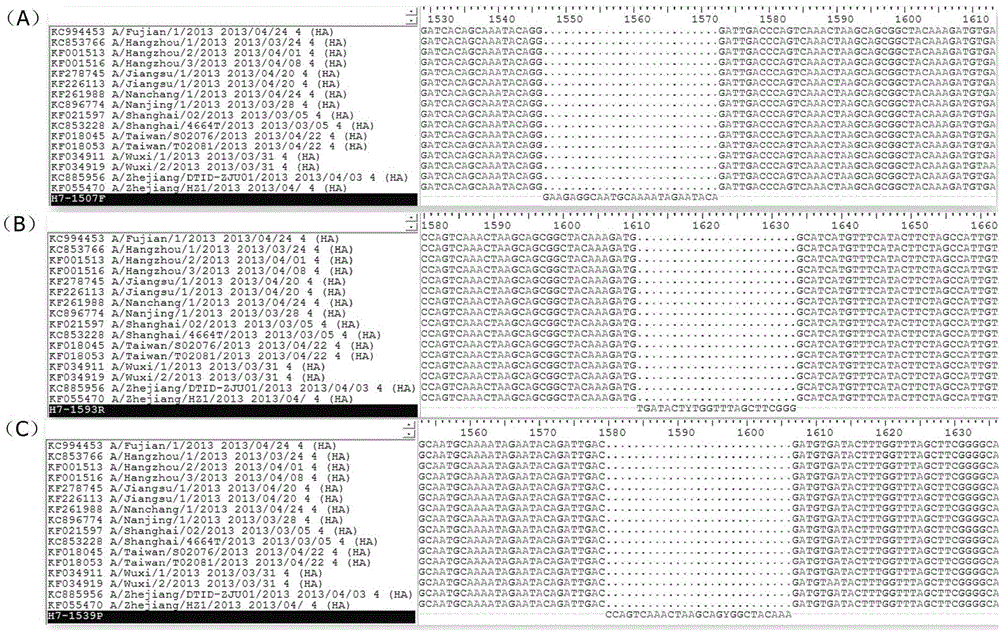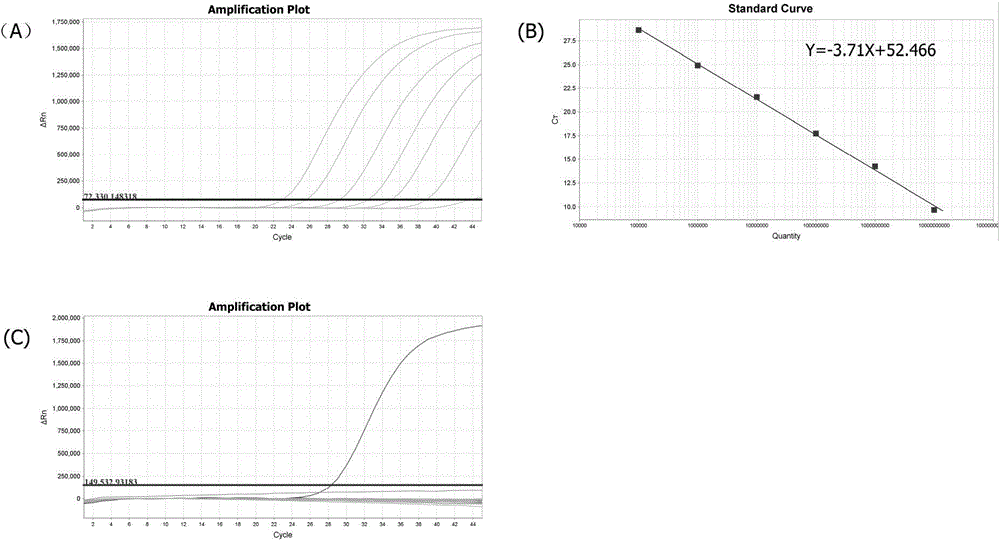Real-time fluorescence RT-PCR method for quantitatively detecting human-infected avian influenza virus (A/H7N9)
A kind of RT-PCR, avian influenza virus technology
- Summary
- Abstract
- Description
- Claims
- Application Information
AI Technical Summary
Problems solved by technology
Method used
Image
Examples
Embodiment 1
[0061] 1 Materials and methods
[0062] 2.1 Collection of clinical specimens
[0063] From April to June 2013, a total of 684 clinical specimens were collected from 18 patients with H7N9 infection from the Shanghai Public Health Clinical Center, including 253 throat swabs, 30 sputum, 228 urine, and 173 feces.
[0064] 2.2 Primer design
[0065] According to the full-length sequence of human infected H7N9 HA included in Genbank, specific fluorescent quantitative PCR primers and probes for detecting H7N9 virus nucleic acid were designed and synthesized using PrimerExpress3.0. The conservation of the newly designed primers and probes was analyzed using the BLAST tool and BioEdit software (version7.0.9) on the NCBI website. Primers and probes were synthesized by Shanghai Invitrogen Company.
[0066] 2.3 Virus culture, nucleic acid extraction, qRT-PCR
[0067] Ten throat swab samples from different patients were selected and inoculated in canine kidney epithelial cells (MDCK ce...
PUM
 Login to View More
Login to View More Abstract
Description
Claims
Application Information
 Login to View More
Login to View More - R&D
- Intellectual Property
- Life Sciences
- Materials
- Tech Scout
- Unparalleled Data Quality
- Higher Quality Content
- 60% Fewer Hallucinations
Browse by: Latest US Patents, China's latest patents, Technical Efficacy Thesaurus, Application Domain, Technology Topic, Popular Technical Reports.
© 2025 PatSnap. All rights reserved.Legal|Privacy policy|Modern Slavery Act Transparency Statement|Sitemap|About US| Contact US: help@patsnap.com



